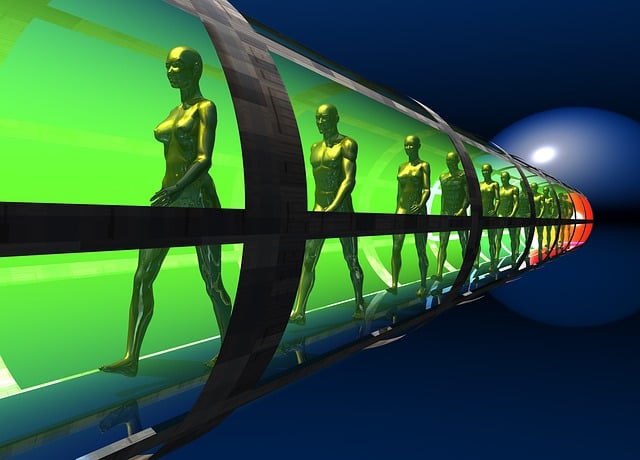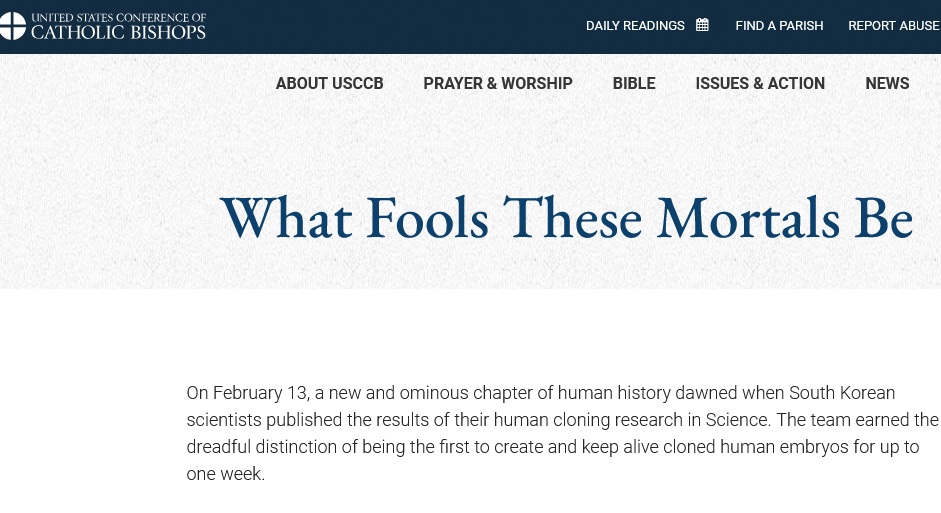by Fed Up Texas Chick, The Tenpenny Report:

If Barbra Streisand cloned her dog several years ago, could human clones be walking among us today? Amid rumors that clones of Joe Biden and Hillary Clinton walk amongst us, it’s a pertinent question for the times.
After Streisand lost her 14-year-old dog Sammie, a doctor took cells from inside the dog’s cheek, sent them to ViaGen Pets in Texas, and voila! Streisand now has a cloned curly-haired Coton de Tulear just like her original beloved pet. The Texas company actually was able to clone four dogs – too many for Streisand, who gave the rest away to friends.
TRUTH LIVES on at https://sgtreport.tv/

Ms. Streisand and Sammie in 2004. Photo Credit Alberto Tolot.
Since 2005, ViaGen Pets, the self-proclaimed world leader in cloning pets, has cloned thousands of pets, at a price tag of $50,000 and up. They mostly clone dogs, but have also cloned horses, and even ferrets.
The Origins of Cloning
It all started back in 1962 when British biologist John Gurdon successfully cloned adult African clawed frogs from the intestinal cells of tadpoles of the same species. The work was so groundbreaking that Gurdon was awarded the Nobel Prize in Medicine.
Are you old enough to remember Dolly the sheep? In 1996, Dolly was the first cloned mammal to be born. Dolly gave birth the natural way to her own offspring, courtesy of her beau ram David. Although Dolly was later euthanized at age six due to lung tumors, a taxidermied Dolly resides at the National Museum of Scotland.
Keep in mind that the DNA sequence is identical in all the body’s cells and cell types, and that this concept of genomic equivalence is what led to cloning.
But scientists stopped at sheep, right? I mean, they wouldn’t try to clone humans, would they? Yes, they would, and in fact, the first human embryo was cloned in America in 2001, just a few short years after the Dolly experiment.

Photo credit: Ulleo on Pixabay
The human embryos were created from the same method as Dolly, a method called somatic cell nuclear transfer. In this method, DNA from human skin cells was placed within enucleated human embryos. In that initial experiment, the most developed embryo grew to six cells, with scientists noting that the embryo would have to reach a 64-cell minimum for medical use. What kind of medical use, you ask? These scientists, led by Jose Cibelli, were careful to say that their intention was not to created cloned human beings, but instead create embryos for therapeutic use only, meaning trying to reach a viable embryo from which to harvest stem cells. One doctor who was a donor hoped that stem cells could be used one day to end his paralysis so that he could walk his daughter down the aisle when she married.
The above research was done at Massachusetts-based Advanced Cell Technology. That was over 20 years ago. In August 2001, both the House of Representatives and President G.W. Bush agreed to make it a federal crime to produce cloned embryos for research, but that legislation was delayed by the September 11 catastrophe. When Congress resumed the legislation process, the Senate did not pass this.
In 2004, South Korean veterinary scientist Dr. Hwang Woo Suk published a paper regarding the establishment of the first human embryonic stem cell using the “Dolly” method. In 1999, he had successfully cloned a dairy cow and quickly shifted to human research. He was all the rage in South Korea, receiving about $30 million in 2005 in research funds, named the first Supreme Scientist of South Korea, and having a stem cell research center established for him at Seoul National University Hospital.
The doctor created great controversy when he announced that he had used 242 human eggs, and 185 eggs in a subsequent 2005 paper. Hwang was later embroiled in scandal when these two papers were found to be fraudulent (falsification of medical data) and the doctor was involved in serious violations of medical ethics in collecting human eggs (242 for the 2004 paper and 185 for the 2005 paper), both purchasing them and forcing junior scientists to donate their eggs. This fraud “shook the world of science” at the time and Hwang’s fall from grace was sudden and unexpected.
The Hwang Affair, as it is known, sparked outrage around the world. The US Conference on Catholic Bishops wrote a great article about it, posing the ethical questions around “the most ominous chapter in human history.” Read it here.

Is cloning legal?
Shortly after the 2001 cloning of the first human embryo, that same week, the British government passed emergency legislation to ban reproductive cloning after a British high court could not find any existing law to prevent human cloning.
In the US, there is no federal legislation regarding cloning, but institutions that receive US federal funds are prohibited from experimental cloning. However, to be clear, there is currently no federal ban on human cloning.
It is important to distinguish between the two types of cloning: (1) Therapeutic cloning of embryos which are destroyed after stem cells are harvested and (2) Reproductive cloning for the purpose of implantation of the embryo.
Given that Roe v. Wade was overturned, the Supreme Court might rule the same way on cloning as it did on abortion law, meaning that decisions would revert to the states.
Human cloning is illegal in some states. Fifteen states have legislation regarding human cloning and 12 prohibit reproductive cloning. Six states — Arkansas, Indiana, Iowa, Michigan, and North and South Dakota also prohibit therapeutic cloning. Three states specifically prohibit the use of state funds in any form of human cloning. California, Connecticut, Maryland and New Jersey allow therapeutic cloning and condone research funded by state funds.
Read More @ TheTenpennyReport.com



